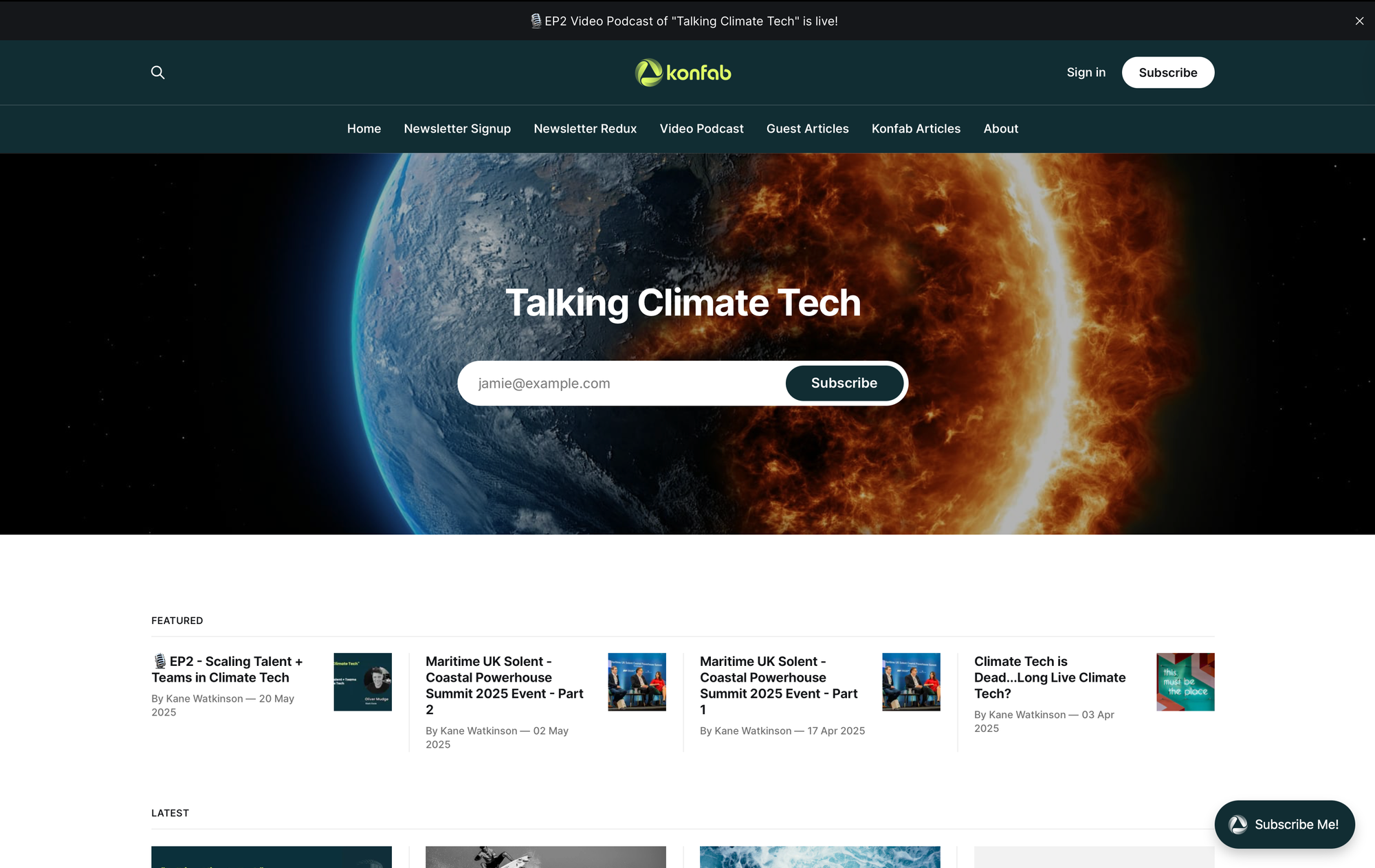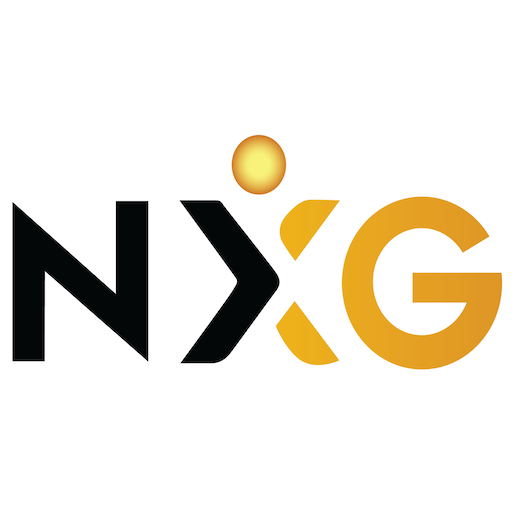Far Infra-red Heating - NexGen and Presence Heating
Innovation spotlight in the heating sector for a startup with real presence!

Introduction
I was recently invited, along with a mix of others from across the construction, architecture, heating and electrical sectors, by the team at NexGen to their facility in Hampshire for a technology demonstration and discussion event.
Particularly interesting from a local advocacy perspective - NexGen is a climate tech-related startup to scale up that attended the first Climate Tech Impact_South community building event.
Let's take a look at the technology, how it works, advantages and opportunities, key challenges, and what is next for the business. ➡️
Far IR Background 🌞
Most people will be very familiar with IR 'heating' even if they aren't aware of it. That big, yellow, fiery ball in the sky is the best example of infrared radiation that we feel as heat.
NexGen technology is in the Far IR category:
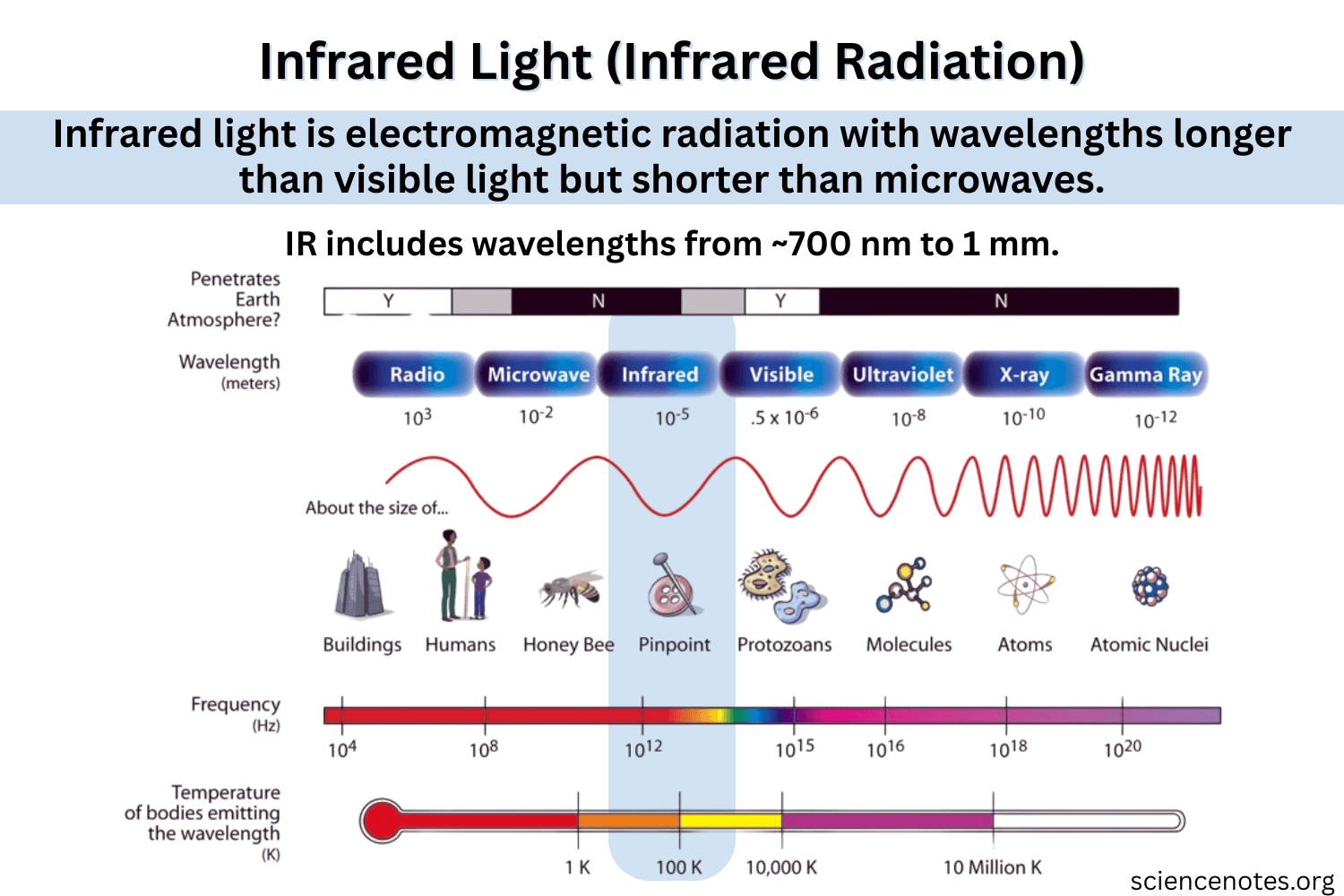
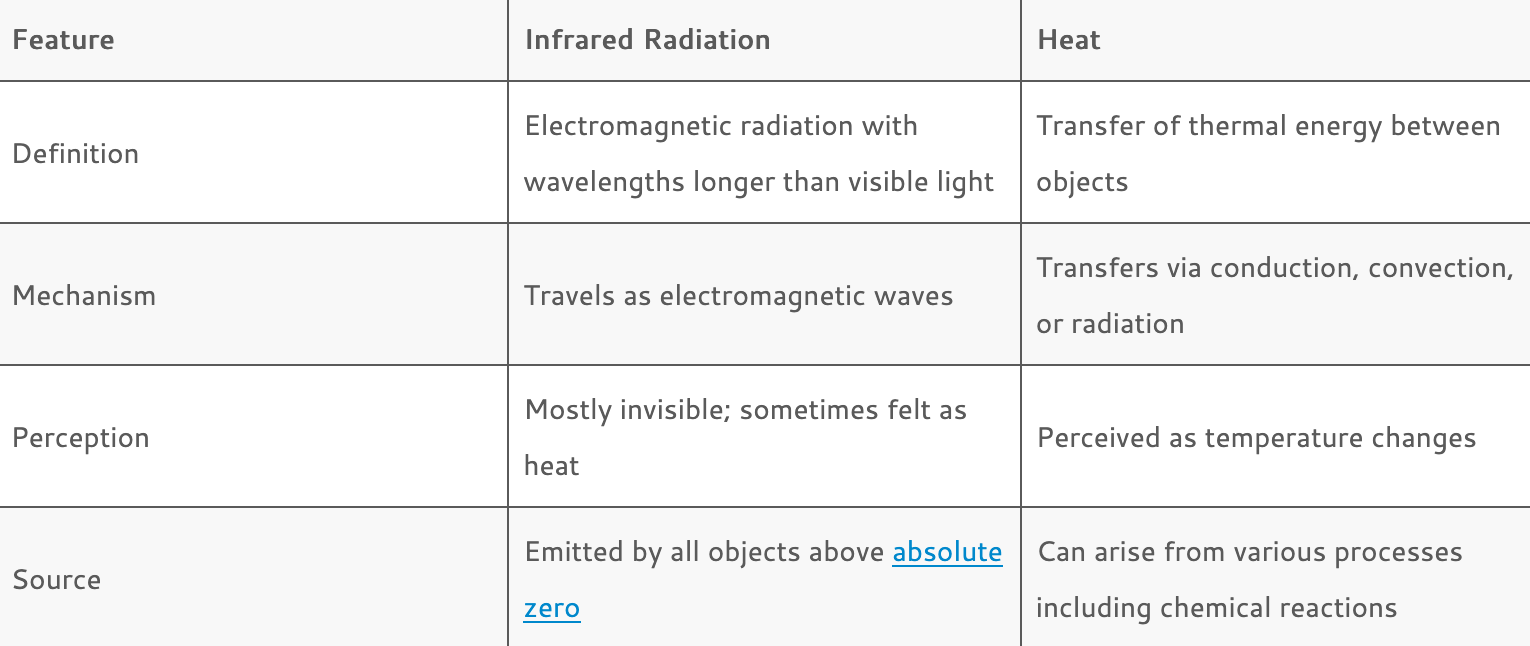
The Technology ⚙️
IR heating has been around for some time; there are plenty of manufacturers out there with IR panels, akin to flat wall-mounted radiators, and now 'picture panels' and all sorts of variants.
What's different here? The key component and system design in the NexGen product is Graphene, used as an internal component in a laminated paper product that can be used in the same way as wallpaper.
And yes, it does look and is installed just like wallpaper!
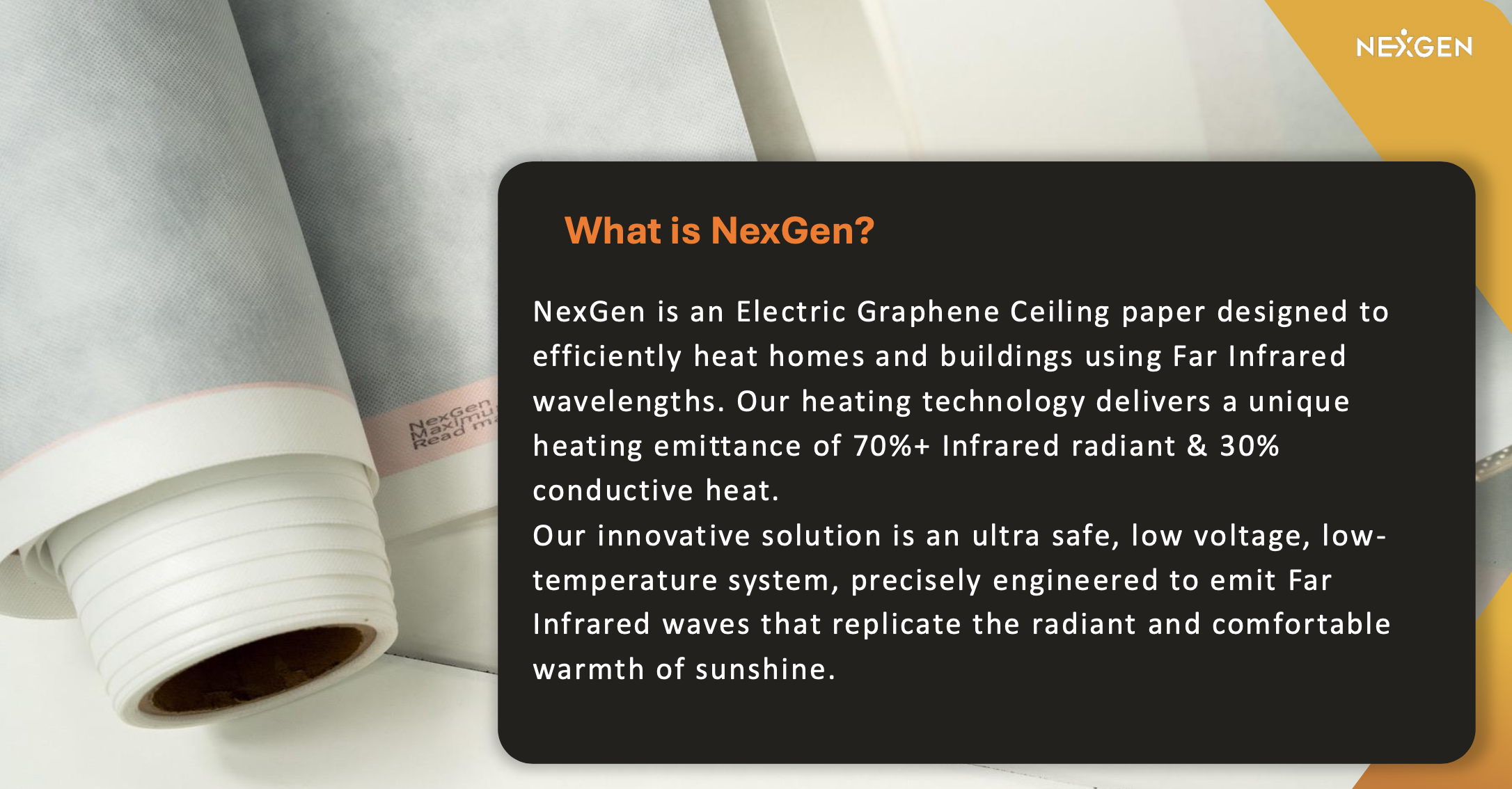
Our regular heating systems are convection-based - the radiator emitter in a room is heating the air to warm the room. That hot air rises and circulates in the room, often finding its way to poorly insulated windows, doors and poorly insulated external walls.
Uneven heat distribution is a challenge, [cold spots and temperature gradients], and temperature loss once the heating is turned off is typically quite quick - especially in the majority of badly insulated old UK housing stock.
The Far IR wall paper sheets or panels instead warm the objects in the room first, and the air in the room as a secondary benefit.
The heat will hit people for that 'warming in the sun' feeling, but also furniture and fabric, creating a heat sink, emitting slowly via conduction. It fires up quickly, too - within 4 minutes typically.
Does it work!? ♨️
Yes, it does, very effectively. As 'you' are being directly heated, it feels very different to our normal experience of radiant heating. It's also a different psychological feeling of heat, something that is rather curious, based on a lifetime of feeling it differently indoors.
Think of those times on Winter days, when it's cold outside but the sun comes out and you get warmed up very quickly - it might be 0℃ outside with snow or frost, but you've taken your winter coat off because it feels like 15℃!
This 'presence heating' effect is quite an experience - to be standing underneath one of the suspended rafts, as per the image below, and be directly heated with a temperature of 22℃, and then to step out from underneath the raft into the factory and be in the ambient air at approximately 15℃ is a very unusual experience - it makes you step back and forth a few times just to feel and check the experience is real.
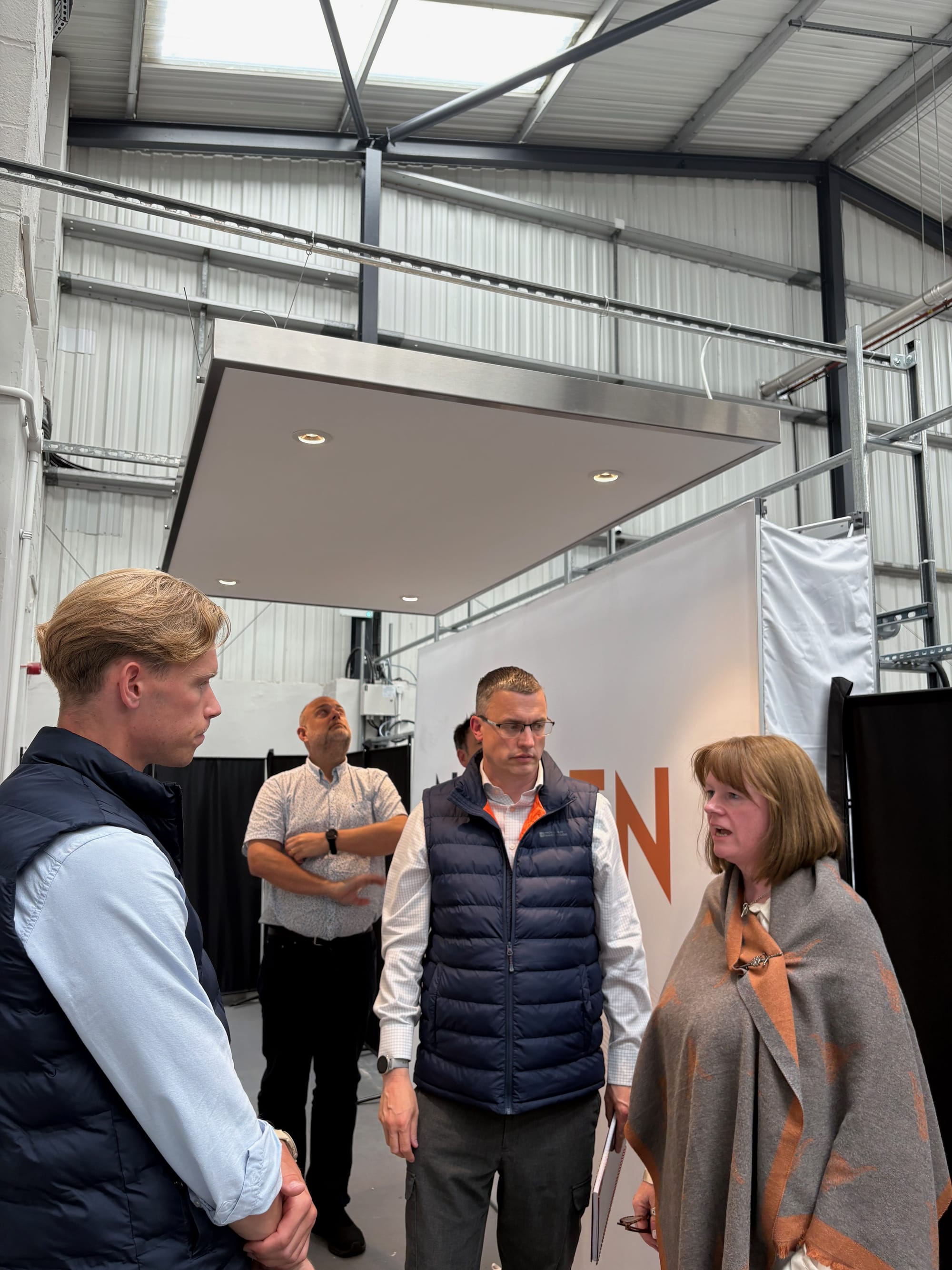
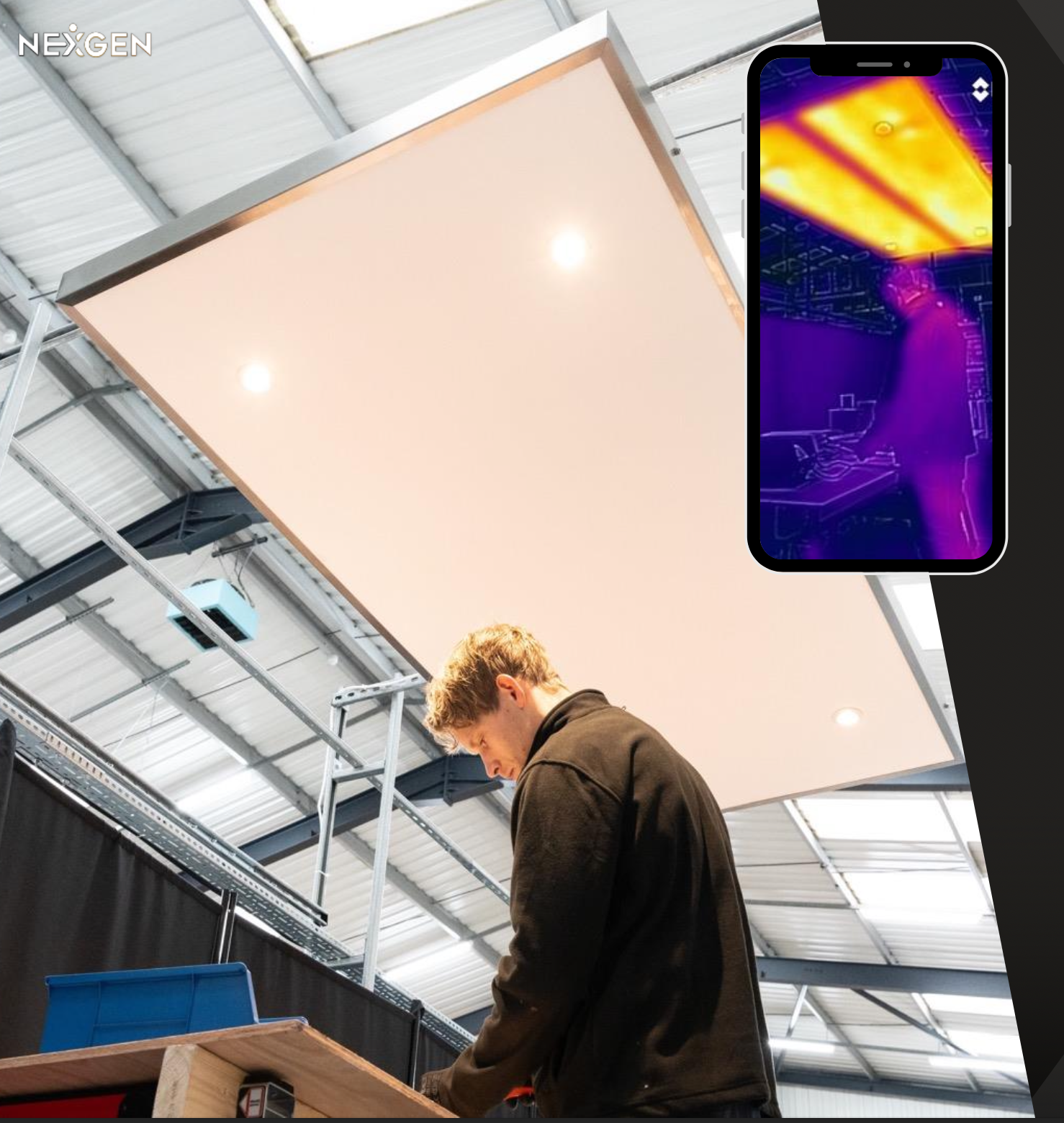
Image Credit: NexGen
The presence effect is where the use case gets really interesting. Independent zoning of installed elements can ensure you heat only specific rooms as requried in residential applications. For commercial and industrial facilities, the ceiling tile drop-in product enables specific zoning even by desk.
If you are the one in the empty office that typically seats 50 people, in the winter, instead of putting the whole floor heating/heating via Air-2-Air AC, or even the whole building gas fire boiler system on, you can heat your specific local desk square meterage via the drop-in ceiling tile product.
The energy you don't use is the cheapest
With additional PIR sensor systems integrated into the app, whole buildings can be heated person by person by location as needed. That moves towards a whole new way of thinking about large facility heating and building management systems.
Development and Partners 👥
Progress to date through the technology development stages has been supported by the Welsh Government, University of Swansea and University of Glasgow.
NexGen only delivers heating, so as part of the pilot and commercial programme rollouts, partnerships have formed with the likes of Sunamp and Mixergy for the domestic hot water provision, and Allume for apartment solar and other providers for battery storage.
A growing partner network in markets such as the USA, Australia and New Zealand ensures traction and feedback from a range of construction styles and heating conditions is onboarded.
Current approvals include BSEN 60675 for IR Heating, the only provider to achieve this, plus EC04 OFGEM grant accreditation for large-scale funding energy efficiency schemes [social housing in particular] and in-field data submitted for the special provision SAP Appendix Q and EPC accreditation.
Appendix Q of SAP provides a means whereby validated individual branded product performance information can be accessed and used as an adjunct to the SAP calculation. A product’s performance information is determined by testing against a specification that has been agreed by the Department for Business, Energy & Industrial Strategy's (BEIS) NCM contractor, the relevant manufacturer(s) and industry sector representatives.
One consideration always held against IR and any direct electric products is the effective 100% limit on efficiency. When comparing this to heat pumps, which might have a typical 300% efficiency, CAPEX and OPEX modelling play a key role in project specification.
The SAP Q accreditation could significantly alter this traditional battleground - anticipation is for a greater than 100% efficiency rating, due in late 2025.
Projects and Applications ⚒️
The use cases go beyond domestic applications. Beyond the offices mentioned above, also consider enormous facilities where volumetric space heating would involve huge capital costs and wasted resources.
✈️ Airports - zoning by people and function on a use-case basis
🏭 Warehousing - robotic and automated facilities only have people occupancy in 10-15% of zoned space
Creating heating systems that balance existing technologies and incumbent systems, with more agile Far IR systems, makes for an interesting solution that could deliver major efficiencies in cost and energy use, while decarbonising heat.
NexGen has significant in-field pilot schemes running in test houses for real-world data collection and comparison with existing in-property systems. Please get in touch, and NexGen will be happy to provide deeper data insights on these trials.
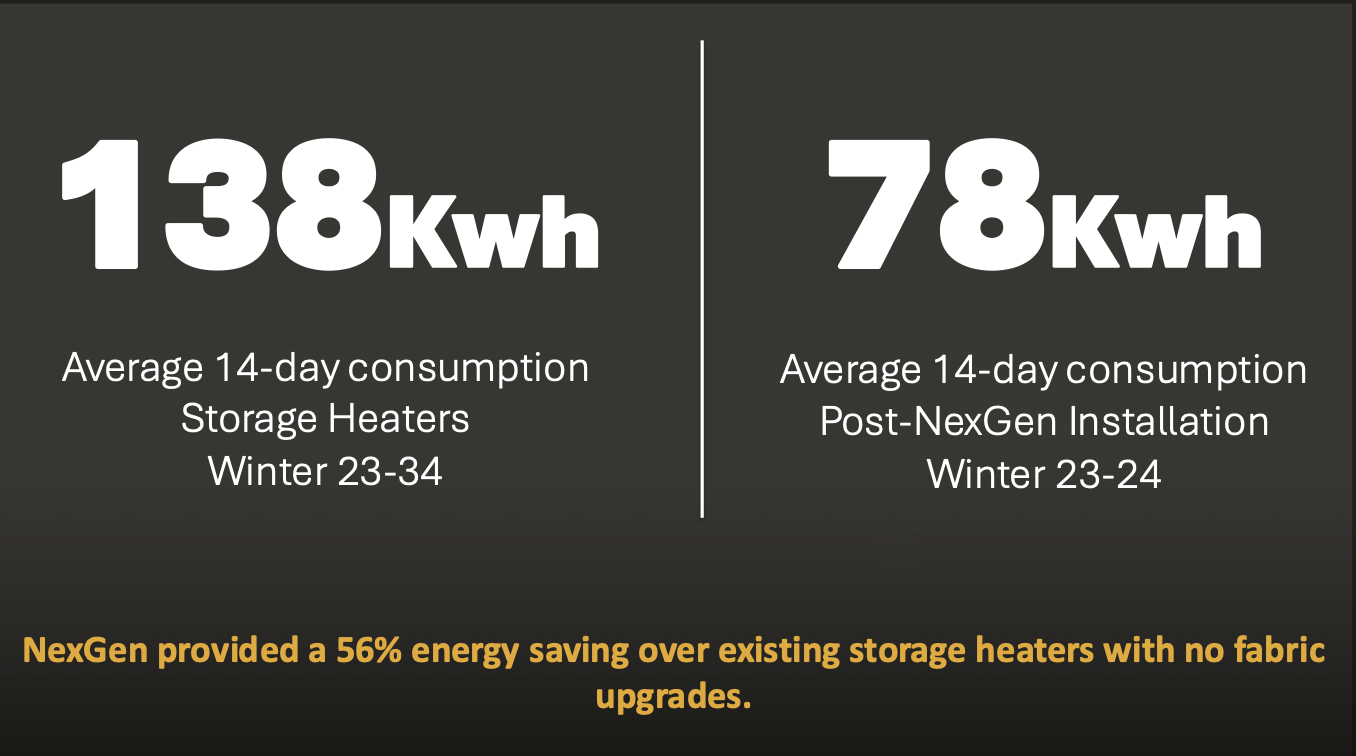
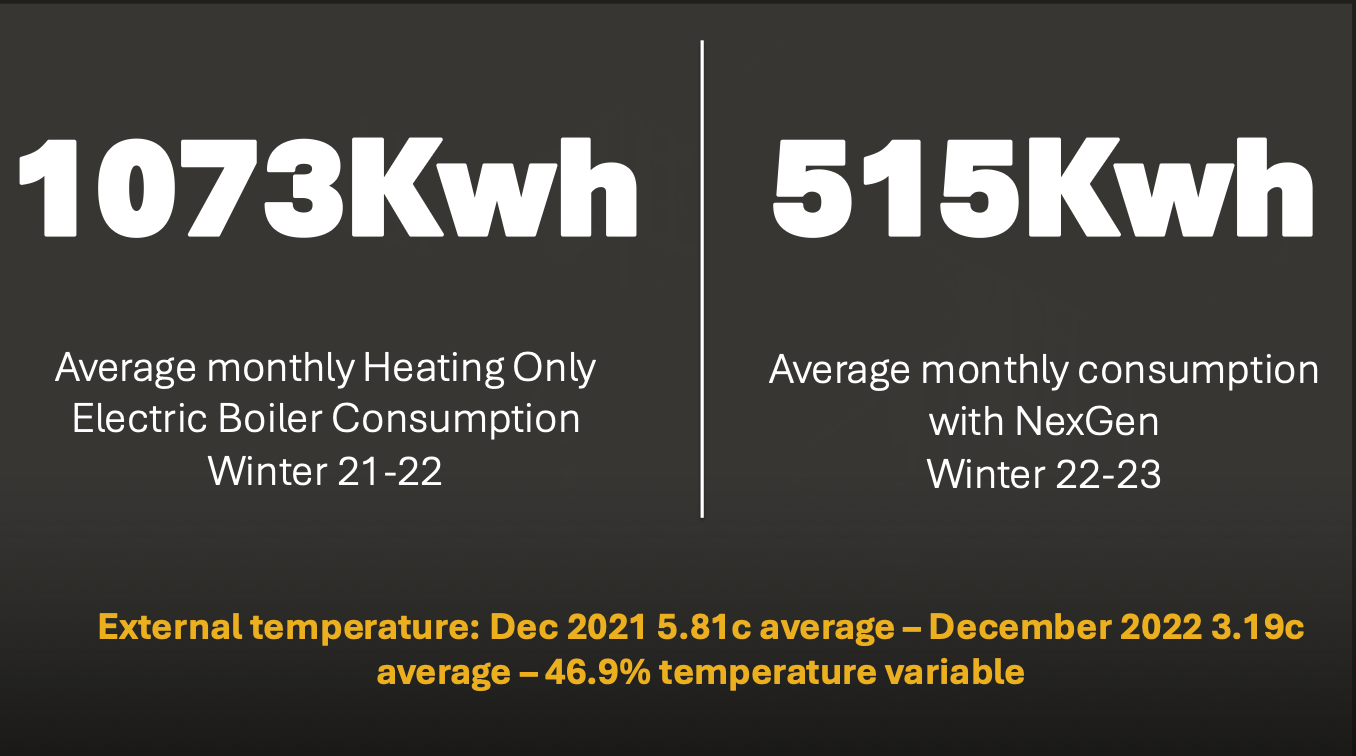
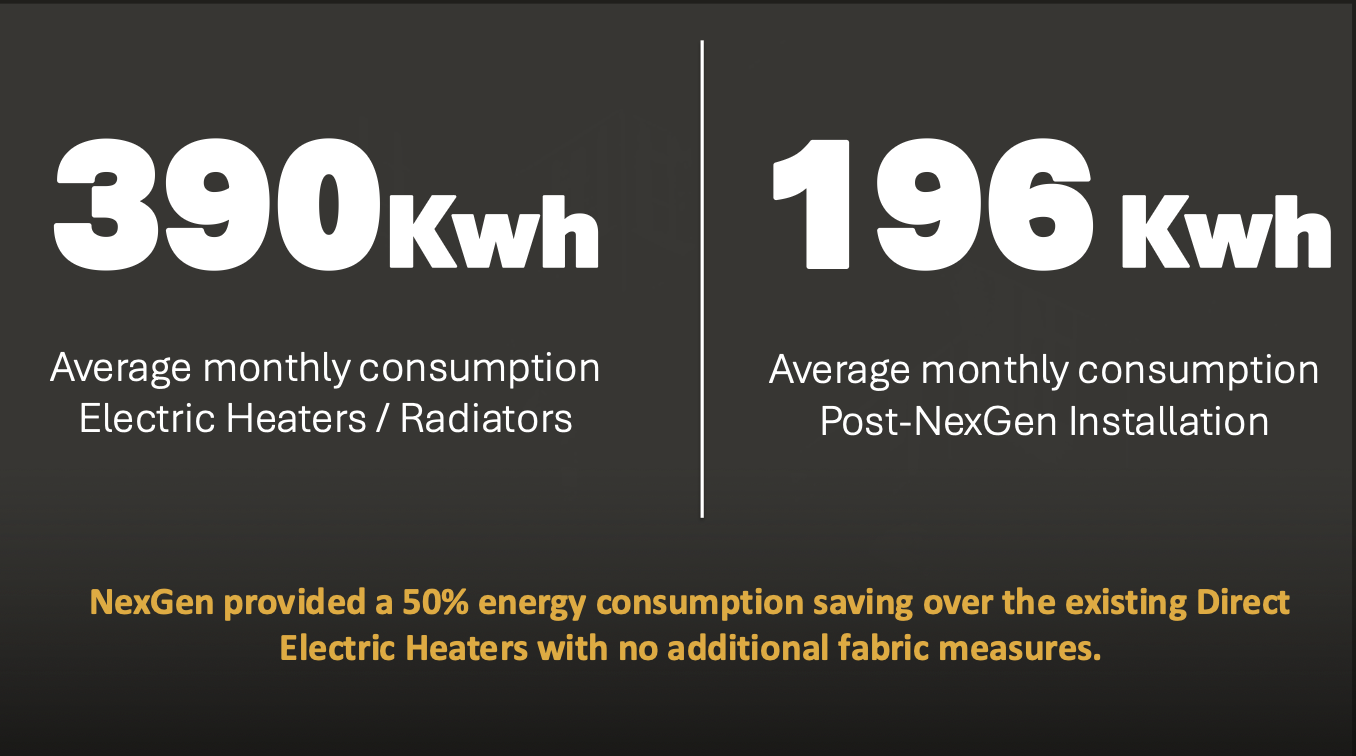
Image Credit: NexGen
Another interesting application, either as a direct solution to problematic properties or as a consequence of general use, is the impact on damp and mould.
Far Infrared penetrates directly into walls, evaporating embedded moisture and mobilising it into the air. The moisture can then be easily removed via ventilation systems or dehumidification. A home can be dried out in a week, compared to multiple months for traditional methods of heating and circulating hot air.
Thanks for stopping by, hope you enjoyed the article. Talking Climate Tech newsletter, articles, and podcast are free to subscribers, and I would love to keep it that way!
If you would like to support beyond your subscription, which is hugely appreciated, any tips and donations are always welcome. 😄
What's next? ▶️
The opportunity to scale up this technology rapidly is tangibly close. When considering the UK domestic social housing market, with approximately 70 social housing groups and 1.5 million homes, plus regular domestic housing and apartments, and then extending to some of the wider applications across the public sector, commercial, and industrial sectors, etc.
As NexGen Far IR is agnostic to building fabric quality, it represents a different approach and solution in the wider competitive mix of heating technologies.
The laminating process is a known scalable technology solution, factory production is clean and fast, while installation utilises known trade skills - there isn't a huge upskill and retraining required.
Challenges remain of course, there are always some. Clearing regulatory hurdles, certifications and approvals in the construction sector are always arduous. Also introducing to the market a new way of heating, feeling and thinking about heat, and the concept of presence heating, requires a lot of education, awareness and engagement across all sectors, and with end users.
A final key driver for the business will be the government's ambition to support scale-ups to ensure we create the right market conditions for them to thrive. That includes enabling them to secure cost-effective production facilities, access grants and tax breaks, capital equipment procurement, and routes to access people resources and job creation.
Let's hope that NexGen can deliver that from its Hampshire, UK base, and not be lured into creating those facilities and jobs in other European and other territories, due to more favourable economic and innovation conditions.
You can get in touch with NexGen and learn more via the website below, or please send me a note, and I can make a direct introduction.




